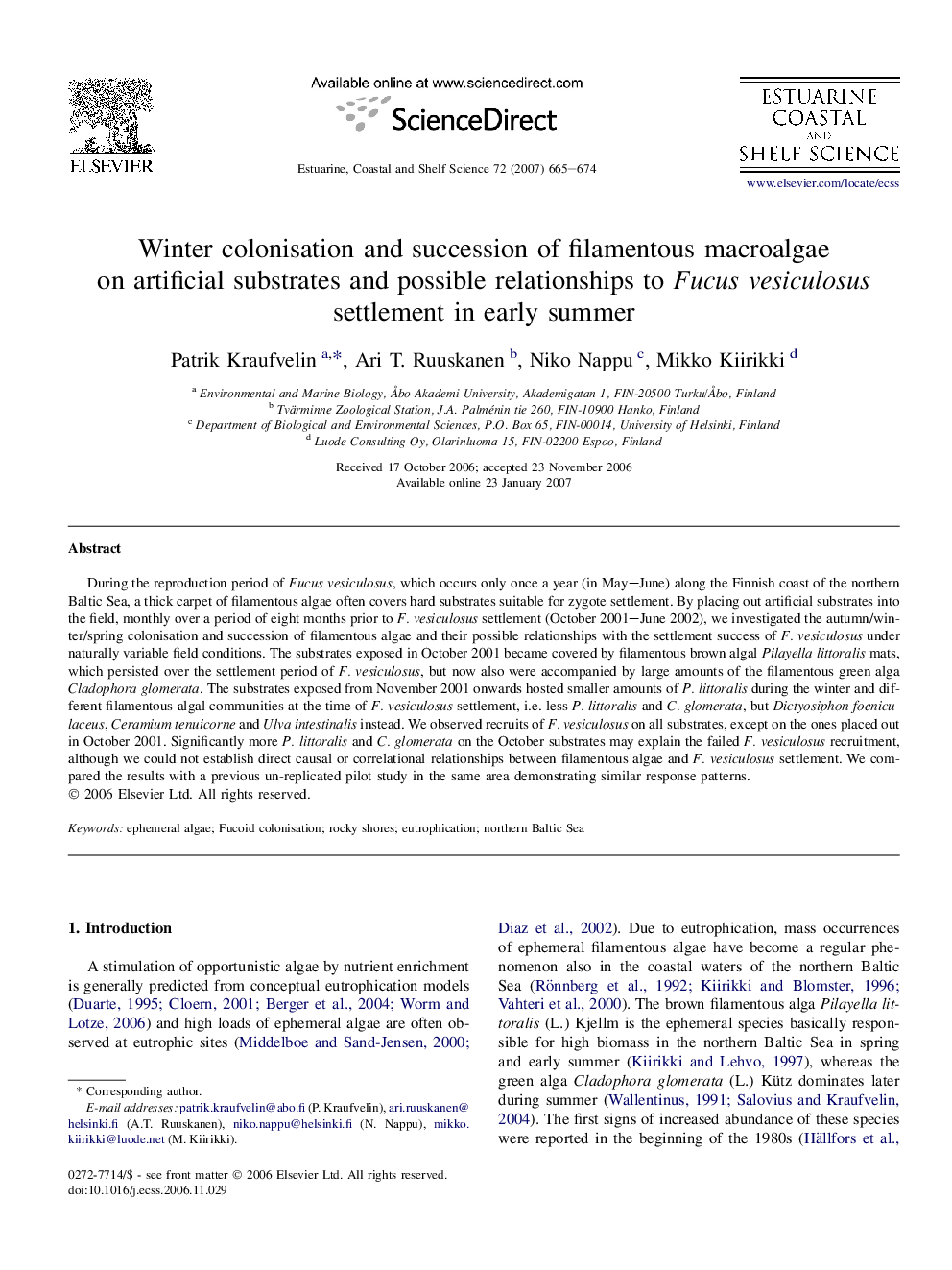| Article ID | Journal | Published Year | Pages | File Type |
|---|---|---|---|---|
| 4541944 | Estuarine, Coastal and Shelf Science | 2007 | 10 Pages |
During the reproduction period of Fucus vesiculosus, which occurs only once a year (in May–June) along the Finnish coast of the northern Baltic Sea, a thick carpet of filamentous algae often covers hard substrates suitable for zygote settlement. By placing out artificial substrates into the field, monthly over a period of eight months prior to F. vesiculosus settlement (October 2001–June 2002), we investigated the autumn/winter/spring colonisation and succession of filamentous algae and their possible relationships with the settlement success of F. vesiculosus under naturally variable field conditions. The substrates exposed in October 2001 became covered by filamentous brown algal Pilayella littoralis mats, which persisted over the settlement period of F. vesiculosus, but now also were accompanied by large amounts of the filamentous green alga Cladophora glomerata. The substrates exposed from November 2001 onwards hosted smaller amounts of P. littoralis during the winter and different filamentous algal communities at the time of F. vesiculosus settlement, i.e. less P. littoralis and C. glomerata, but Dictyosiphon foeniculaceus, Ceramium tenuicorne and Ulva intestinalis instead. We observed recruits of F. vesiculosus on all substrates, except on the ones placed out in October 2001. Significantly more P. littoralis and C. glomerata on the October substrates may explain the failed F. vesiculosus recruitment, although we could not establish direct causal or correlational relationships between filamentous algae and F. vesiculosus settlement. We compared the results with a previous un-replicated pilot study in the same area demonstrating similar response patterns.
